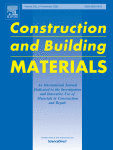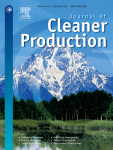Published Work and Presentations
Tasks Overview and Progress Reports
Task I - A comprehensive review
Report 1.1
Title:
Carbonation of alkali-activated materials: A review
Summary:
A comprehensive literature review was conducted to understand how the incorporation of WGR, MIBA, and EAFS as precursors in AAM affected the performance of mortar and concrete. Additionally, the latest developments in carbon capture and storage technologies were researched. The work involved the collection, organisation, and analysis of relevant publications, with a preference for peer-reviewed journals listed in the Science Citation Index Expanded database.
Key Achievements:
This task allowed the comparison of the most recent findings to adequately (i) characterise WGR, MIBA and EAFS, (ii) adjust the mix design and production process and (iii) define a practical testing methodology that can be interesting from an industrial perspective.
Task II - An optimised mix design
Report 2.1
Title:
Optimization of the alkaline activator for several aluminosilicate industrial wastes in the production of alkali-activated materials: Testing methodology
Summary:
This research meticulously planned the investigation of optimal alkaline solution ratios (Na₂O/binder and SiO₂/Na₂O) to enhance future mechanical performance in alkali-activated binders, including FA, MIBA, EAFS, and WGR. The strategic planning involved outlining a timeline and preparing materials for the study, encompassing the creation and testing of 16 different mixes for each binder, with the aim of selecting the best-performing mix based on compressive and flexural strengths.
Key Achievements:
Significant achievements in the planning phase include the strategic determination of crucial alkaline solution ratios, laying the foundation for producing alkali-activated binders with anticipated superior mechanical properties. This thoughtfully crafted plan sets the stage for efficient execution, emphasising the study's significance in advancing sustainable construction practices.
Report 2.2
Title:
Optimising the performance of CO2-cured alkali-activated aluminosilicate industrial by-products as precursors: Results and discussion
Summary:
This study explored EAFS, MIBA, and WGR as precursors for alkali-activated concrete. Testing various combinations of anhydrous sodium hydroxide and sodium silicate solutions, the study aimed to find optimum ratios for maximising mechanical performance. The three-step curing process, including thermal, dry, and carbonation curing, was applied. Compressive and flexural strength tests revealed impressive strengths, with mixes containing slag and glass reaching nearly 40 MPa. Surprisingly, higher Na₂O/binder ratios were often required for optimal performance, challenging expectations for the SiO₂/Na₂O ratio.
Key Achievements:
This research successfully characterised aluminosilicate industrial wastes, pinpointing optimal ratios for CO₂-cured alkali-activated concrete and achieving remarkable compressive strengths. The unexpected correlation between Na₂O/binder ratios and performance challenges preconceived notions, offering valuable insights for future sustainable concrete production.
Task III - An optimised CO2-curing process
Report 3.1
Title:
CO2 profile and storage capacity of alkali-activated wastes: Testing methodology
Summary:
This report outlines an experimental campaign to determine optimal CO₂ concentration and exposure periods for superior mechanical performance in three alkali-activated binders—FA, MIBA, and WGR. The study involves preparing mixes and small-scale pavement blocks, focusing on accelerated carbonation curing. Testing includes thermogravimetric analysis, x-ray diffraction, nuclear magnetic resonance, scanning electron microscopy, and compressive/flexural strength evaluations, aiming to identify optimal parameters for sustainable concrete production.
Key Achievements:
This research establishes a robust testing methodology to explore CO₂ profiles and storage capacity in alkali-activated wastes. By systematically evaluating mechanical performance under varied accelerated carbonation conditions, the study contributes to advancements in sustainable concrete production.
Report 3.2
Title:
CO2 profile and storage capacity of alkali-activated wastes – Results and discussion
Summary:
This study optimises accelerated carbonation curing for three alkali-activated binders: FA, MIBA, and WGR. Using identical mortar-size specimens with optimal mix designs, diverse curing regimes were applied, emphasising accelerated carbonation with varied CO₂ concentrations and exposure periods. Analyses, including thermogravimetric analysis, x-ray diffraction, nuclear magnetic resonance, and mechanical strength tests, aimed to identify the most effective accelerated curing method, emphasising the ideal CO₂ concentration and exposure period. Results deepen the understanding of crucial factors influencing properties of alkali-activated binders under accelerated carbonation curing.
Key Achievements:
This study advances comprehension of alkali-activated binders' properties, emphasising optimal accelerated carbonation curing parameters and their interplay with CO₂ concentration, exposure period, and mechanical performance. Findings guide future applications of this sustainable curing method in alkali-activated waste materials, providing valuable insights for enhancing performance and sustainability in construction applications.
Report 3.3
Title:
Enhancing environmental sustainability through alkali-activated vibro-compacted pervious paving blocks
Summary:
This study pioneers accelerated carbonation curing in alkali-activated fly ash for enhanced mechanical performance and sustainability in pervious paving blocks. Comparative assessments reveal superior properties, including abrasion resistance and strengths, surpassing ordinary Portland cement. Accelerated carbonation enhances stability, reducing water-related parameters, with consistent slip resistance for pavement construction. The study examines physical and chemical properties, emphasising accelerated carbonation's potential to mitigate the carbon footprint while improving mechanical performance in sustainable construction practices.
Key Achievements:
This pioneering study integrates accelerated carbonation curing in alkali-activated FA pervious blocks, showcasing superior mechanical performance and sustainability. Notable improvements in abrasion resistance, strengths, and enhanced stability emphasise the potential of this innovative approach. The findings substantiate accelerated carbonation curing as a promising strategy for sustainable construction, reducing the carbon footprint while elevating mechanical attributes.
Report 3.4
Title:
Alkaline activation of fly ash and coal mining tailings to produce pervious paving blocks with seashells as aggregates
Summary:
This comprehensive study explores a novel blend of fly ash and coal mining tailings for alkali-activated concrete, focusing on pervious pavement block production. Seashell sand inclusion and the impact of CO₂ curing intervals are key aspects. Despite strength reductions, the ash/tailings blend emerges as a promising, sustainable alternative, addressed through carbonation curing. Optimal performance is identified in the 50% ash/50% tailings mix. The study extensively examines block properties, emphasising slip resistance, abrasion resistance, density, porosity, and water stability. Notably, blocks exhibit excellent slip resistance, even after prolonged CO₂ exposure, with improved abrasion resistance and water stability. Findings highlight potential applications for the blend in environmentally friendly construction materials, urging further research and optimisation.
Key Achievements:
This pioneering study establishes the viability of a fly ash and coal mining tailings blend for alkali-activated pervious concrete pavement blocks. Despite initial strength reductions, significant improvements are achieved through carbonation curing, showcasing optimal performance in a balanced ash/tailings mix. The thorough examination of block properties underscores the versatility and potential environmental benefits of this novel blend, advocating for continued research and optimisation in this emerging field.
Task IV - A modelled CO2 diffusivity and storage capacity
Report 4.1
Title:
Numerical modelling of the CO₂ diffusivity
Summary:
This report introduces a pioneering numerical study using ABAQUS to model CO₂ diffusivity in mortar specimens with three alkali-activated binders: FA, MIBA, and WGR. It outlines detailed model development, discussing geometry, mesh, material properties, loading, boundary conditions, and analysis methods. Numerical CO₂ profiles offer insights for future research, guiding optimisation of material carbonation. The study marks a critical step towards developing coupled diffusivity-mechanical models, potentially predicting the mechanical behaviour of non-structural precast elements based on sequenced analyses.
Key Achievements:
This study establishes a foundational numerical framework for CO₂ diffusivity modelling, offering insights into considerations and limitations. Results set the stage for optimising material carbonation and enhancing product performance. The study lays groundwork for future development of coupled diffusivity-mechanical models, potentially predicting the mechanical behaviour of non-structural precast elements through sequential analyses.
Task V - An assessed life cycle environmental performance
Report 5.1
Title:
Life cycle assessment of the CO₂-enhanced AAM: What are the real-life implications?
Summary:
This report explores the environmental performance of industrial waste products used as alkali-activated binders, replacing ordinary Portland cement in concrete. A life cycle assessment compares these formulations with ordinary Portland cement and FA concrete mixes, revealing a clear trend. Alkaline activator components, particularly NaOH and Na₂SiO₃ proportions, significantly impact overall environmental performance. Despite this, the study highlights the potential for substantial environmental impact reduction through mass production, emphasising material preparation efficiency and the unique capability of calcium-rich concrete mixes for internal CO₂ capture during CO₂ curing.
Key Achievements:
This study achieves a robust understanding of the environmental implications of CO₂-enhanced alkali-activated materials, emphasising the critical influence of alkaline activator component proportions. The findings underscore the potential for significant environmental impact reduction through mass production efficiencies and highlight the dual benefits of enhanced mechanical performance and internal CO₂ capture in calcium-rich concrete mixes during CO₂ curing.
Publications in International Journals
Durability-related performance of recycled aggregate concrete containing alkali-activated municipal solid waste incinerator bottom ash
Sequeira, F.; de Brito, J.; Silva, R.V.
Construction and Building Materials 2023, 397, 132415. https://doi.org/10.1016/j.conbuildmat.2023.132415


Carbonation of alkali-activated materials: A review
Lamaa, G.; Duarte, A.P.C.; Silva, R.V.; de Brito, J.
Materials 2023, 16, 3086. https://doi.org/10.3390/ma16083086


Optimising the performance of CO2-cured alkali-activated aluminosilicate industrial by-products as precursors
Lamaa, G.; Suescum-Morales, D.; Duarte, A.P.C.; Silva, R.V.; de Brito, J.
Materials 2023, 16, 1923. https://doi.org/10.3390/ma16051923


Thermal and mechanical performance of gypsum composites with waste cellulose acetate fibres
Romero-Gómez, M.I.; Silva, R.V.; Costa-Pereira, M.F.; Flores-Colen, I.
Construction and Building Materials 2022, 356, 129308. https://doi.org/10.1016/j.conbuildmat.2022.129308


Effect of incorporating municipal solid waste incinerated bottom ash in alkali-activated fly ash concrete subjected to accelerated CO2 curing
Suescum-Morales, D.; Silva, R.V.; Bravo, M.; Jiménez, J.R.; Fernández-Rodríguez, J.M.; de Brito, J.
Journal of Cleaner Production 2022, 370, 133533. https://doi.org/10.1016/j.jclepro.2022.133533


Effect of reactive magnesium oxide in alkali-activated fly ash mortars exposed to accelerated CO2 curing
Suescum-Morales, D.; Bravo, M.; Silva, R.V.; Jiménez, J.R.; Fernandez-Rodriguez, J.M.; de Brito, J.
Construction and Building Materials 2022, 342, 127999. https://doi.org/10.1016/j.conbuildmat.2022.127999


Alkali-activated materials with pre-treated municipal solid waste incinerator bottom ash
Avila, Y.; Silva, R.V.; de Brito, J.
Applied Sciences 2022, 12, 3535. https://doi.org/10.3390/app12073535


Performance enhancement of alkali-activated electric arc furnace slag mortars through an accelerated CO2 curing process
Kassim, D.; Lamaa, G.; Silva, R.V.; de Brito, J.
Applied Sciences 2022, 12, 1662. https://doi.org/10.3390/app12031662


Communications in Scientific Meetings
Optimised alkaline solutions of CO2-cured aluminosilicate industrial wastes: a new era of concrete
Lamaa, G.; Duarte, A.; de Brito, J.; Silva, R.V.
WASTES: Solutions, Treatments and Opportunities – 6th International Conference
September 6-8, 2023
Coimbra, Portugal Conference website

Aluminosilicate industrial wastes as precursors in the production of CO2-cured alkali-activated precast concrete
Lamaa, G.; Kassim, D.; Silva, B.; Duarte, A.; de Brito, J.; Silva, R.V.
WASTES: Solutions, Treatments and Opportunities – 6th International Conference
September 6-8, 2023
Coimbra, Portugal Conference website

Production of low-carbon concrete using alkali-activated aluminosilicate industrial wastes as alternative binders
Kassim, D.; Ibrahim, M.; de Brito, J.; Silva, R.V.
WASTES: Solutions, Treatments and Opportunities – 6th International Conference
September 6-8, 2023
Coimbra, Portugal Conference website

Solid carbon from methane pyrolysis as a partial replacement for ordinary Portland cement
Santos, J.; Kassim, D.; Silva, R.V.
WASTES: Solutions, Treatments and Opportunities – 6th International Conference
September 6-8, 2023
Coimbra, Portugal Conference website

Carbon-enhanced alkali-activated aluminosilicate industrial wastes for precast concrete production
Lamaa, G.; Kassim, D.; Silva, R.V.
ICBBM 2023 – 5th International Conference on Bio-Based Materials
June 21-23, 2023
Vienna, Austria Conference website

Desempenho mecânico de betões com cinza de fundo de resíduos sólidos urbanos activada alcalinamente
Cagica, G.; de Brito, J.; Silva, R.V.
2º Simpósio de Engenharia Civil, Instituto Superior Técnico, Universidade de Lisboa
May 3, 2023
Lisbon, Portugal Conference website

Desempenho em termos de durabilidade de betões com cinza de fundo de resíduos sólidos urbanos activada alcalinamente
Sequeira, F.; de Brito, J.; Silva, R.V.
2º Simpósio de Engenharia Civil, Instituto Superior Técnico, Universidade de Lisboa
May 3, 2023
Lisbon, Portugal Conference website

Non-structural precast alkali-activated concrete elements produced with aluminosilicate industrial wastes and cured under forced carbonation
Lamaa, G.; Kassim, D.; Silva, B.; Duarte, A.; Silva, R.V.; de Brito, J.
JPEE 2022 - 6as Jornadas Portuguesas de Engenharia de Estruturas
November 9-11, 2022
Lisbon, Portugal Conference website

Performance enhancement of alkali-activated aluminosilicate industrial wastes as binders for concrete production
Lamaa, G.; Duarte, A.; Silva, R.V.; de Brito, J.
JPEE 2022 - 6as Jornadas Portuguesas de Engenharia de Estruturas
November 9-11, 2022
Lisbon, Portugal Conference website

Concrete pavement blocks using carbon-enhanced alkali-activated aluminosilicate industrial wastes
Lamaa, G.; Kassim, D.; Silva, B.; Duarte, A.; Silva, R.V.; de Brito, J.
ICBMM 2022 – 6th International Conference on Building Materials and Materials Engineering
September 15-17, 2022
Barcelona, Spain Conference website

Book Chapter
Alkali-activated aluminosilicate industrial wastes as alternative binders in precast paving blocks
Kassim, D., Lamaa, G., Silva, B., Duarte, A.P.C., de Brito, J., Silva, R.V.
The Path to Green Concrete, Woodhead Publishing (Elsevier)
Editors: de Brito, J., Agrela, F., Silva, R.V.
1st Edition (In press) - June 1, 2024
Paperback ISBN: 9780443191657 eBook ISBN: 9780443191664


Public Seminar
Circularity in the built environment: bilateral cooperation between Norway and Portugal
Instituto Superior Técnico, University of Lisbon
August 30, 2023
Lisbon, Portugal
